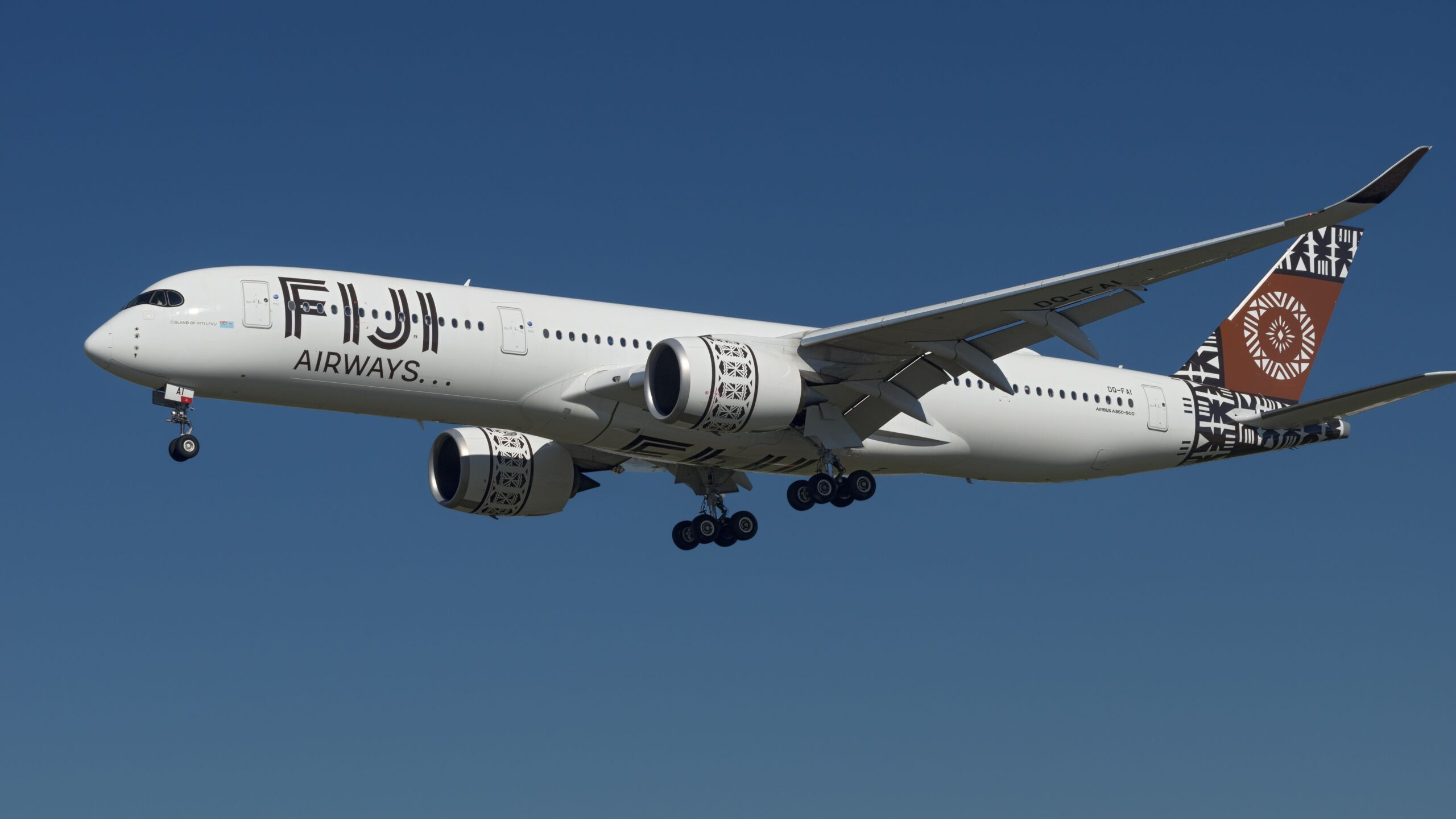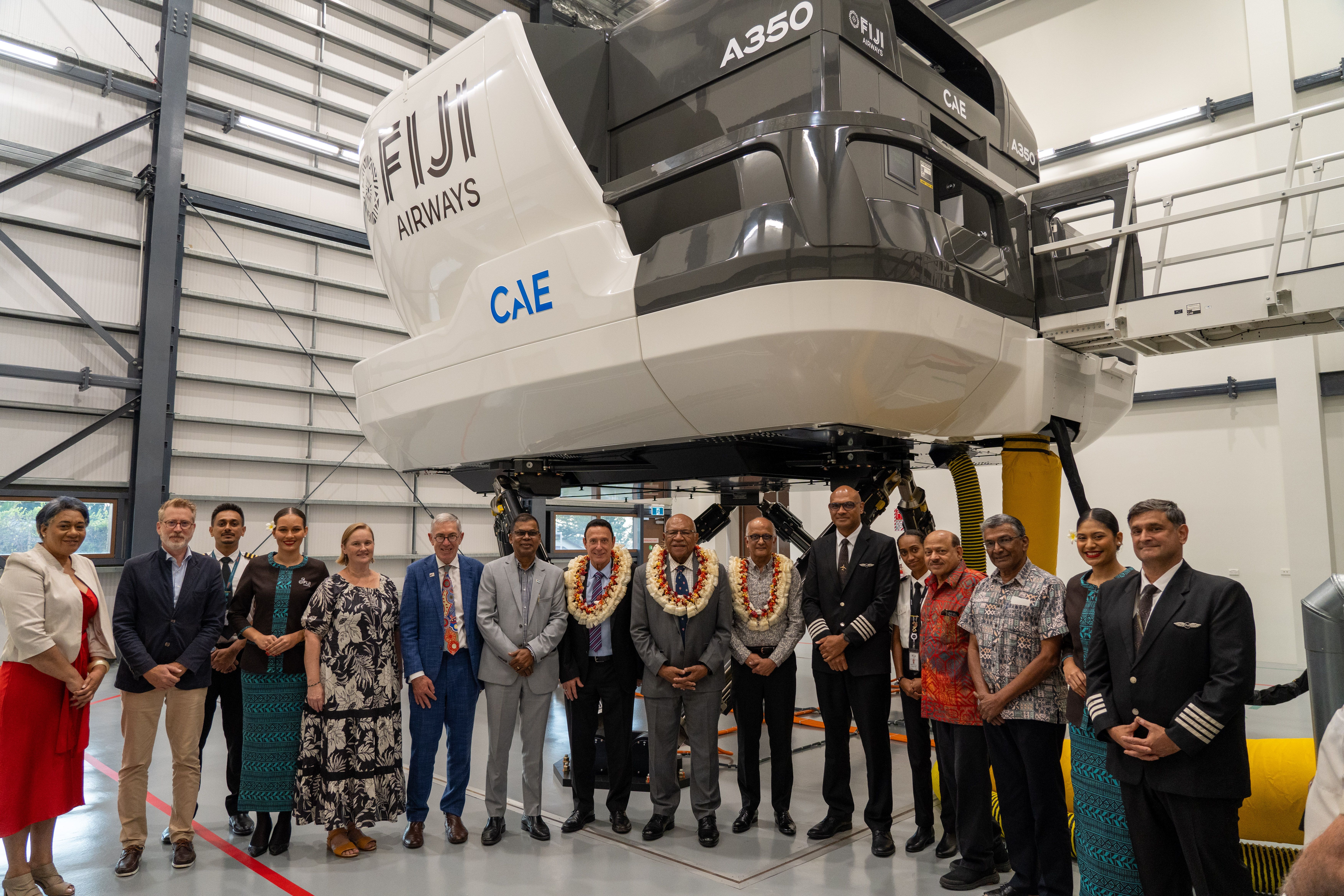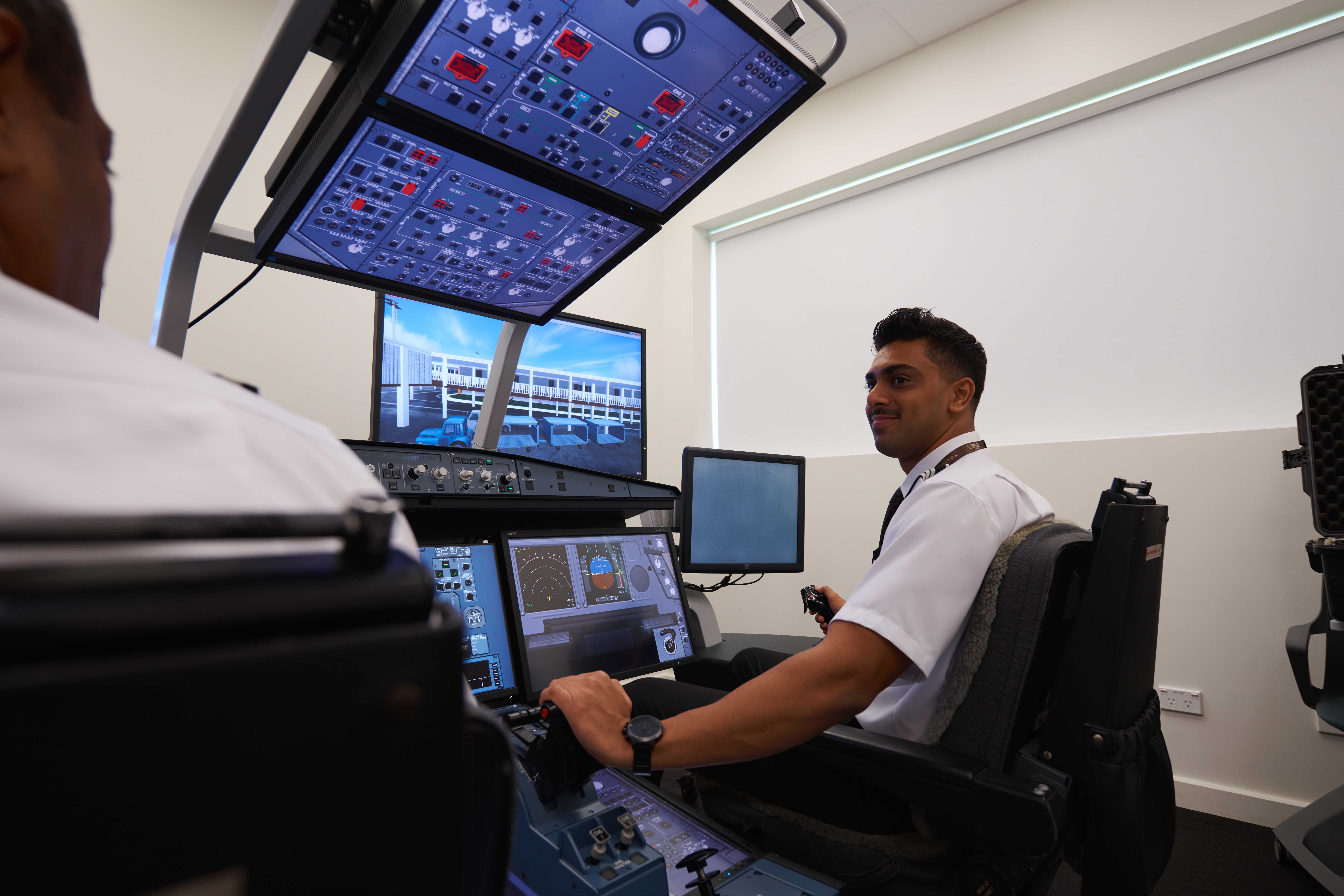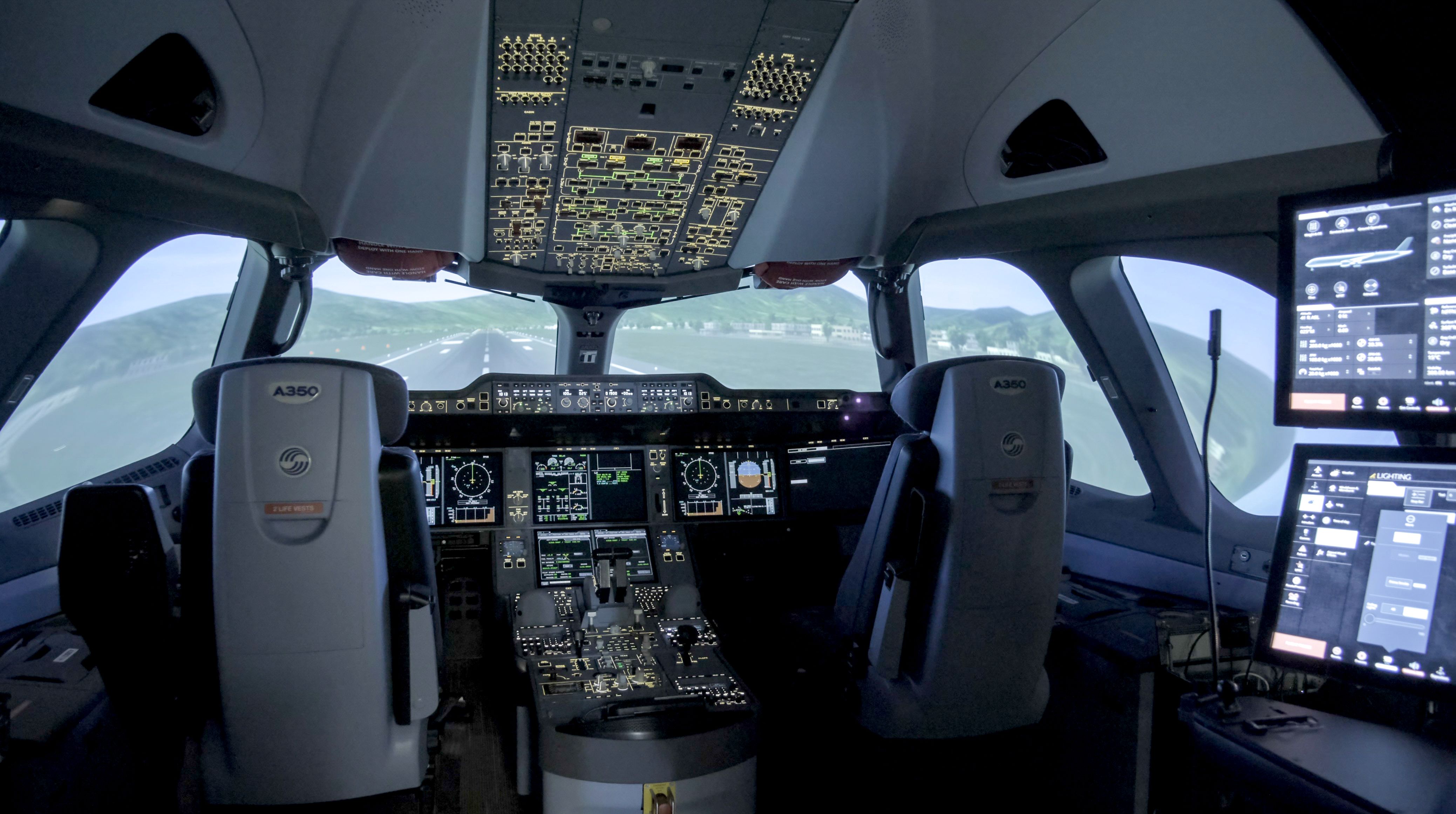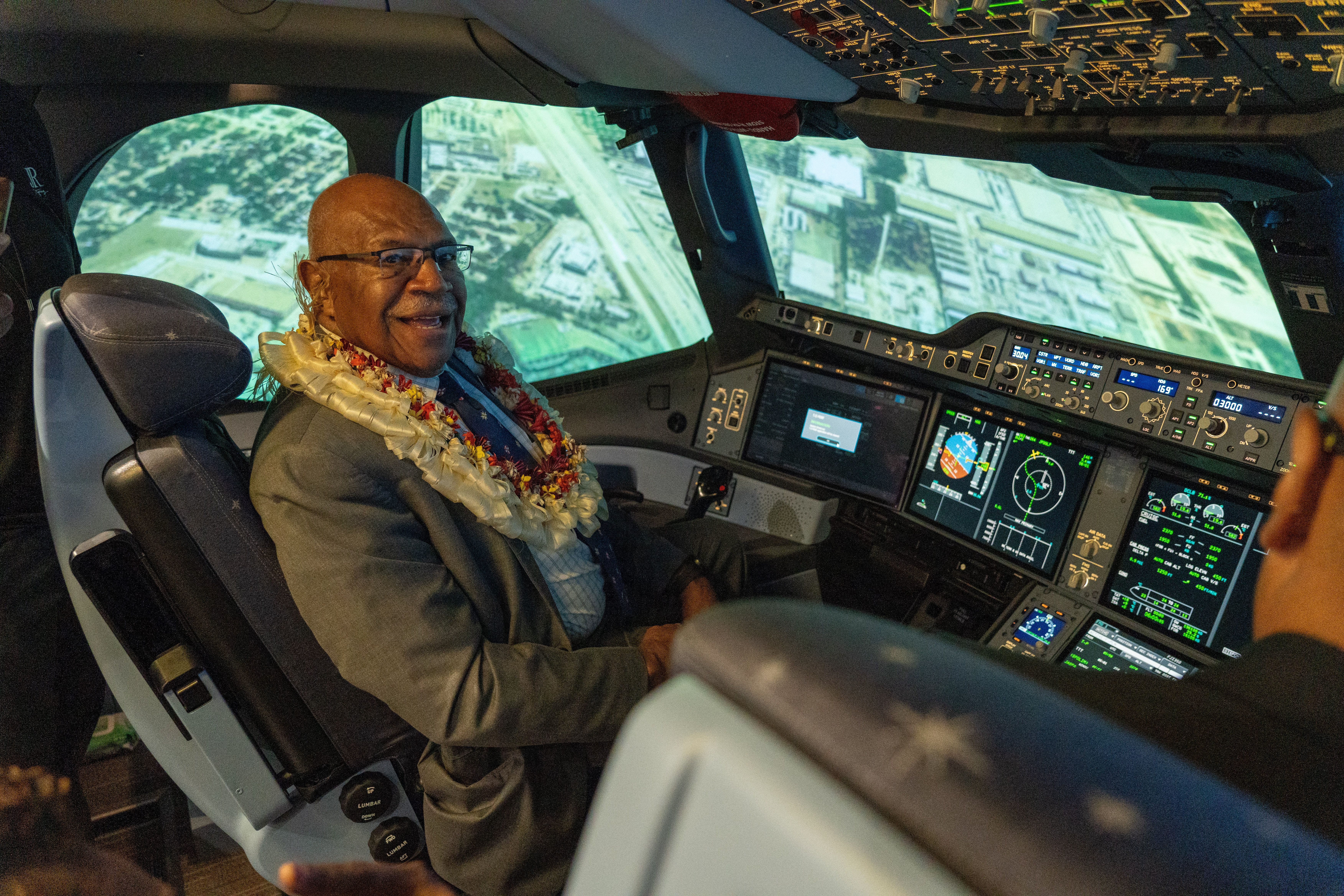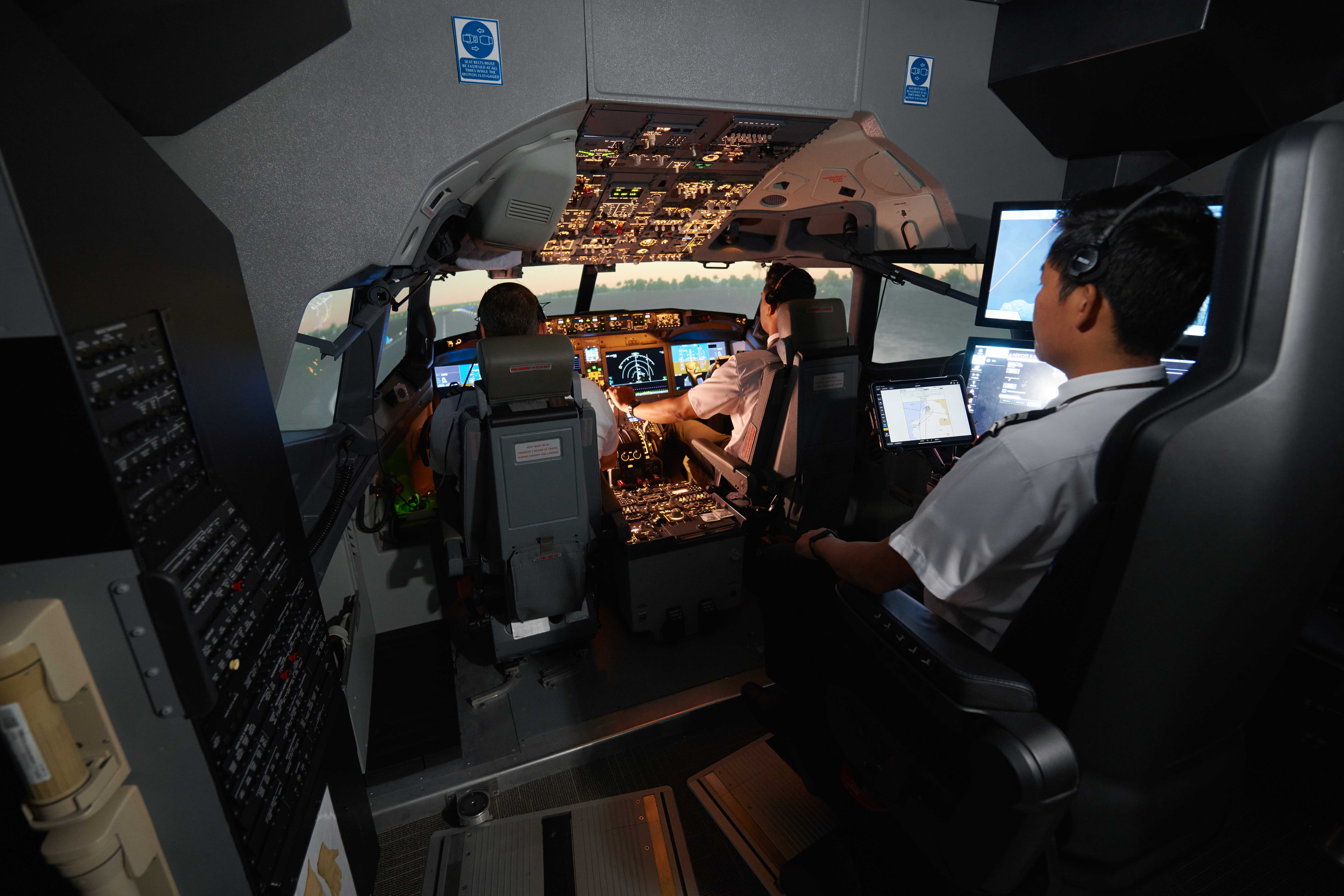Most small to medium-sized airlines use external providers for flight training, often sending pilots thousands of miles from home to attain type ratings or keep their licenses current. As we learned from the pandemic, relying on third-party training can be fraught and forward-thinking airlines, such as Vietjet, Air Astana and Fiji Airways, are enhancing their flight training capabilities to become regional Centers of Excellence.
The new home of Pacific flight training
With less than 20 aircraft comprising five aircraft types, Fiji Airways fits that bill, and with a need for more than 200 pilots over the next decade, it has substantial flight training needs. Despite enduring severe travel restrictions during COVID-19, the airline continued to invest in its state-of-the-art Fiji Airways Aviation Academy, with four new training devices unveiled yesterday in Fiji.
Photo: Fiji Airways
On September 10, Fiji Airways (Fiji) officially commissioned two new CAE 7000XR full flight simulators (FFS) and two fixed training devices (FTD), which are fully installed and certified by the European Union Aviation Safety Agency (EASA) and the Civil Aviation Authority of Fiji (CAAF).
Photo: Fiji Airways
The new equipment includes full flight simulators for Airbus A350 and ATR 72 aircraft and flight training devices for Airbus A330 and Boeing 737 MAX 8 jets. The Academy was launched in December 2019, and the new equipment complements CAE 7000XR full flight simulators for Airbus A330 and Boeing 737 MAX 8 aircraft, while the FTDs add to existing DHC-6 Twin Otter and A330 MFTD units.
Photo: Fiji Airways
A big step forward
The addition of the A350 and ATR 72 simulators marks Fiji Airways as the leading aviation training center in the Pacific and an attractive location for other airlines in Asia-Pacific. At yesterday’s ceremony, the Prime Minister of Fiji, Sitiveni Ligamamada Rabuka, had an opportunity to fly a Fiji Airways jet without leaving the ground.
Photo: Fiji Airways
CEO Andre Viljoen said the new equipment is a significant step forward for the Academy, adding it highlights the airline’s dedication to providing the highest standards of training and safety for pilots and engineers.
“It reinforces our commitment to establishing Fiji as a regional leader in aviation excellence. By bringing advanced training technology directly to Fiji, we ensure our pilots and engineers have the tools they need to excel in their careers.”
The Academy has the equipment and expertise to handle training for a wide range of aviation needs, including pilot, cabin crew, engineering and safety training. By establishing that capability, it brings world-class training to its employees, allowing them to advance their careers while staying closer to family and their home environment.
Photo: Fiji Airways
During COVID, the Academy proved pivotal to maintaining pilot currency, crucial to the airline’s plan of returning to service as soon as restrictions eased. It facilitated the progression of 34 national pilots in seat positions, undertaking 45 Type ratings for national pilots new to aircraft type, supporting 74 foreign license conversions, re-integrating 13 Fijian pilots returning from overseas employment and training more than 600 local cabin crew.
Photo: Fiji Airways
Early last year, the Fiji Airway’s Board approved an investment of approximately FJ$160 million ($71.4m) for the four synthetic training devices. The airline said its aim is to grow the Academy on the firm foundations of its own training needs as the anchor customer while competing for a share of the global airline training market to develop new ancillary revenue streams.
Founded in 1951, the group includes the international airline Fiji Airways and its wholly-owned domestic and regional airline, Fiji Link. The airline changed its name from Air Pacific in June 2013 and today brings in 70% of all visitors who fly to Fiji, employs more than 2,000 people and earned 2023 revenues of more than FJD$1.7 billion ($760 million).

